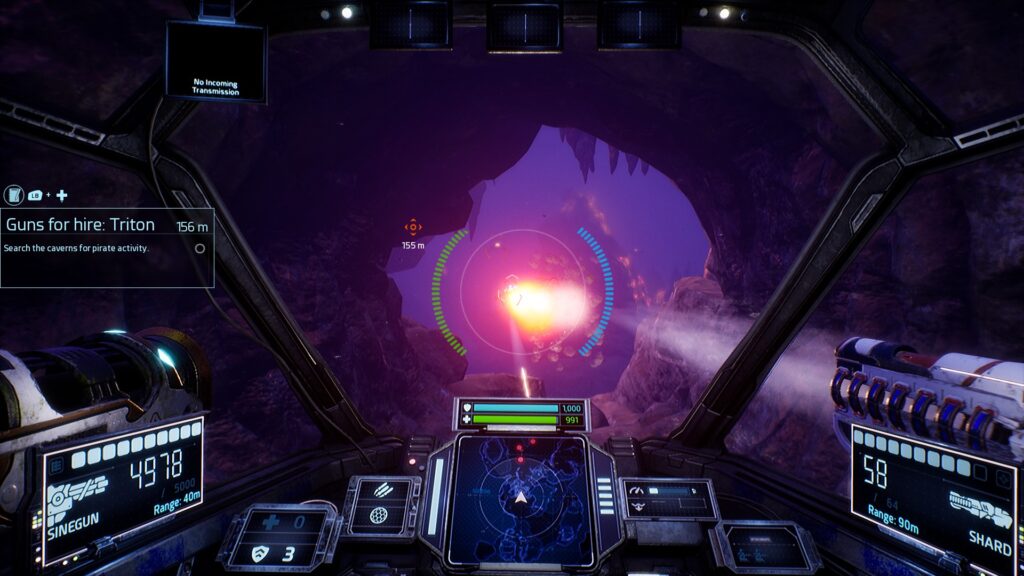
AquaNox was a short-lived franchise that nonetheless managed to gain a rather devoted cult following. The series started as Archimedean Dynasty in 1996, and was followed up by AquaNox and AquaNox 2: Revelation in 2001 and 2003 respectively. Unfortunately, the series never went anywhere after that.
Massive Development, the creators of the series, went from publisher to publisher before being bought up by JoWooD Productions. The studio was later closed, and JoWooD themselves went under and sold their assets to THQ nearly a decade ago.
Between financial woes and the death of the franchise’s lead writer, Helmut Halfman, most fans assumed that the series would become a forgotten part of PC gaming history. That was until THQ and Digital Arrow announced Aquanox Deep Descent, a reboot prequel set years before Archimedean Dynasty.
The game was successfully Kickstarted in 2015, but considering the delays and general silence from the developers following the campaign, it clearly had a very troubled development cycle. Perhaps expectedly, the end result is not the triumphant return of the AquaNox franchise that fans were probably hoping for.
Aquanox Deep Descent
Developer: Digital Arrow
Publisher: THQ Nordic
Platform: Windows PC
Release Date: October 16th, 2020
Players: 1-4
Price: $29.99
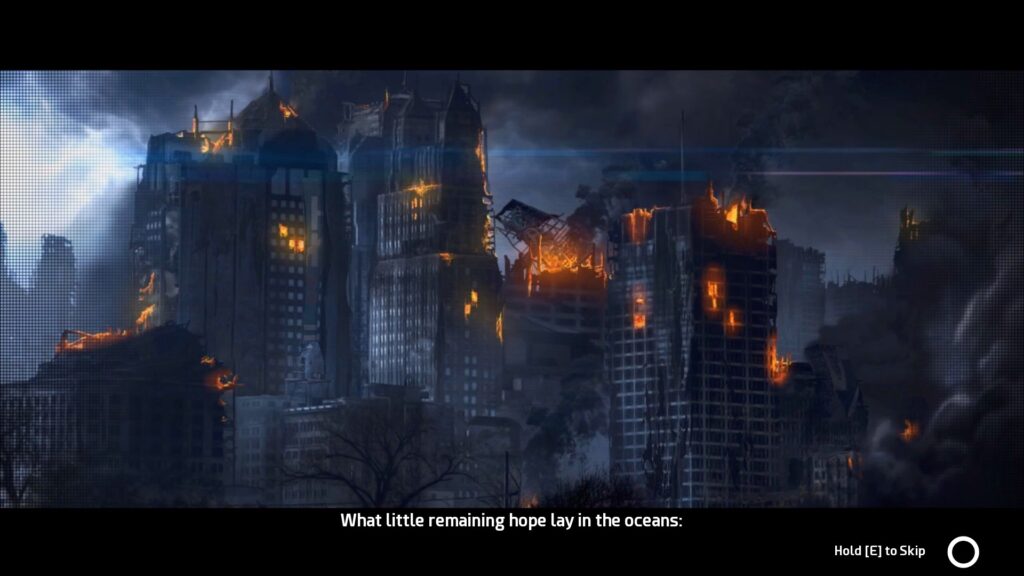
Aquanox Deep Descent is technically set in the same world as the previous games, but it feels more like a reboot than a proper prequel. I’ll admit I’m no expert on AquaNox lore, and haven’t played the series in an extremely long time, but there are lots of elements in Deep Descent that I don’t remember from the originals.
Some of these include glowing plankton that turns sharks into zombies, and a massive nation called the Indian Pacific Federation that acts as the primary rivals of the Atlantic Alliance. The general idea of the setting remains the same however, and you’ll even meet some characters from the originals.
Deep Descent is set hundreds of years into the future, after humanity was forced to retreat to the depths of the ocean after wars and catastrophes rendered the Earth’s surface uninhabitable. This new world, called Aqua, is divided up between rival nations and factions that are constantly fighting over territory and resources.
If you desire to dig deeper into the lore, the game includes a handy encyclopedia full of terms, factions, technology, events, and so on. You’ll also find audio logs, but like Serious Sam 4, Deep Descent is yet another recent game that commits the cardinal sin of audio log etiquette- by not allowing you to listen to them while playing.
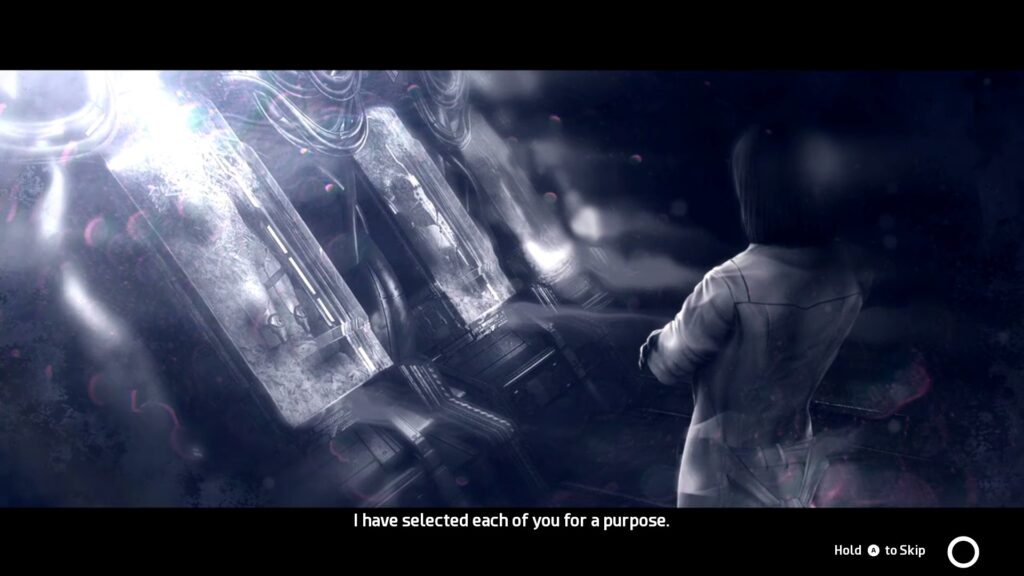
The main characters are Kaelen, Fedor, Nabila, and Hannah; a group of four cryos that were frozen as part of the mysterious Project Nammu right before the Last Day. That was the apocalyptic event that lead to humanity building a new home under the sea. The group is awakened by a mysterious man named Ishmael, before they are all attacked by an unknown enemy.
Due to being in cryo sleep for so long, the main characters don’t remember much about their past lives, or what Project Nammu was supposed to do. They are soon rescued by Okabe, the captain of the freelance ship the Tupilaq. Okabe believes that they have information that can help him achieve his own goals, so the parties agree to travel across Aqua searching for answers about Project Nammu and its purpose.
Ignoring the retcons and new elements that will probably annoy hardcore fans, the overall story of Deep Descent is rather bland and not especially well written. The main characters go through some basic arcs and development, but don’t evolve a whole lot past their original personalities, which can largely be summed up as the Roguish Leader, the Science Nerd, the Snarky Woman, and the Strong Military Woman.
Aside from Okabe, the secondary cast is barely existent, and are mostly regulated to short conversations in stations or aboard the Tupilaq. The voice acting and dialog is also fairly mediocre. The main cast is serviceable, but some of the secondary characters are pretty bad, with voice actors that mispronounce words as they awkwardly deliver their lines.

The world of Aqua is divided into lots a small, fairly linear maps that are connected by fast travel gates to other areas. Many maps will contain stations you can visit to interact with NPCs and upgrade your ship. Some maps will be a bit more open, while others are mostly a maze of underwater caves or tunnels.
While you can just blitz through the game by going straight to each main story mission, there is a fair amount of exploration. Most levels are full of wreckage you can salvage for resources for crafting ammo and health packs, or purchasing upgrades. There is close to a dozen or so different resources, and you can buy and sell them at stations if you find yourself short when trying to buy a specific upgrade.
The upgrade system itself is really basic and poorly paced. Each ship has four systems that can be upgraded in a linear fashion, but these upgrades are slowly drip-fed to you throughout the campaign after completing certain missions.
In the final hours of the game, Deep Descent then throws upgrades at you like candy for each of the six ships. By this point they aren’t very relevant though, and you probably won’t have enough resources and cash to upgrade each ship and experiment with them at their full potential.
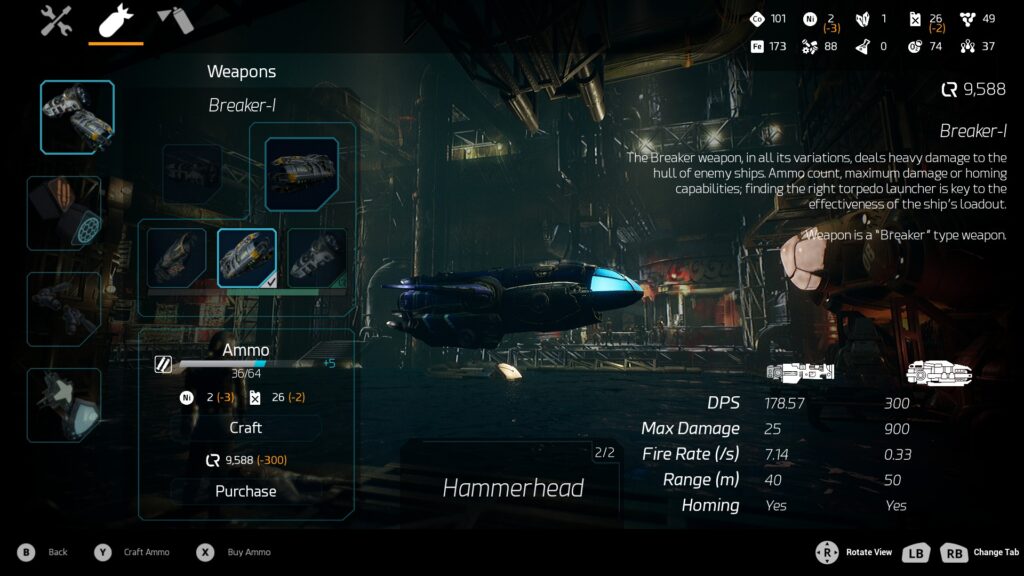
There are quite a few side quests you can pick up from the crew of the Tupilaq, and at stations too. These range from simple bounty missions, to slightly more story-driven content. In general though, Deep Descent‘s missions usually revolve around fetch quests or killing certain enemies.
While the missions themselves might be a bit bland, the world of Aqua is actually pretty fun to simply drive around in. The game’s visuals are pretty decent, and this leads to some really nice looking underwater environments. You’ll travel through dark underwater caves lit by strange bioluminescent organisms, and undersea wastelands littered with the remnants of humanity’s past.
Sadly, the fairly impressive environments are hampered somewhat by the rather lazy fish and debris effects. Fish don’t move out of the way of your submarine, and instead just vanish as you phase right through them.
The game takes a pretty lame approach to invisible walls, however. The devs created something called Nano Plankton for Deep Descent, which are basically just swarms of green-glowing particles that destroy ships… Somehow. It honestly feels like they just conjured up the concept to explain why you can’t go past certain points.
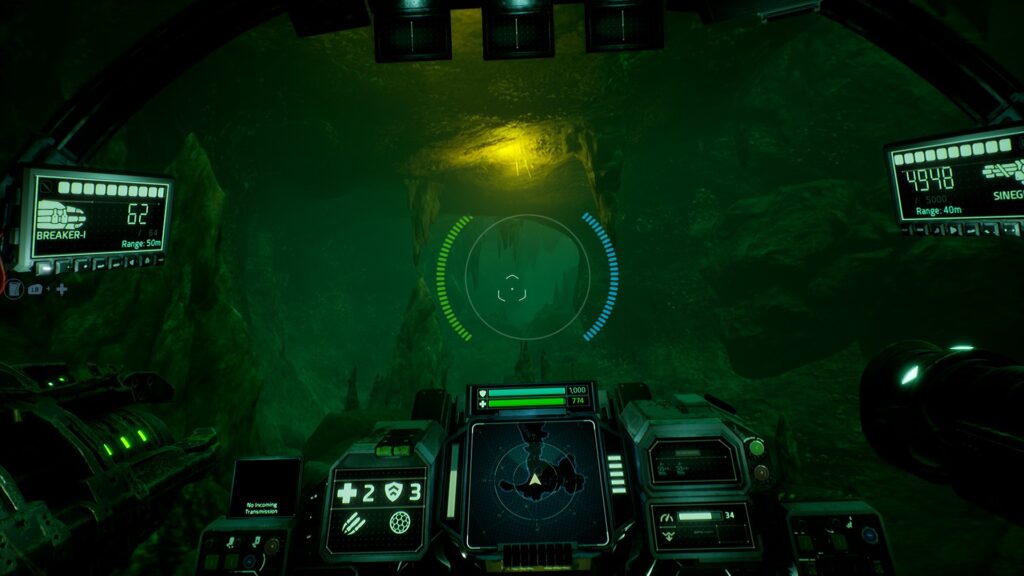
One of the worst aspects of exploration is the map, which can be hard to navigate with if you aren’t tracking a mission location. The game uses a 2D map to try and portray a 3D world, which can get confusing on the levels that feature various underwater caves and tunnels.
One area in particular has about three layers of caves underneath the ocean floor. This level does have a network of pipes you can follow to aid in navigation, but you can still get lost because it’s hard to tell what level of the cave the mission objectives are located on.
Of course, the main reason to buy Deep Descent is to shoot up enemy submarines. As a 6DoF shooter, you can move in any direction as you engage your enemies. Your ship has a set number of pressurized jumps, which is a fancy way to say dodge moves. You can jump several times in rapid succession, but you’ll need to wait for each pip to recharge before it can be used again.
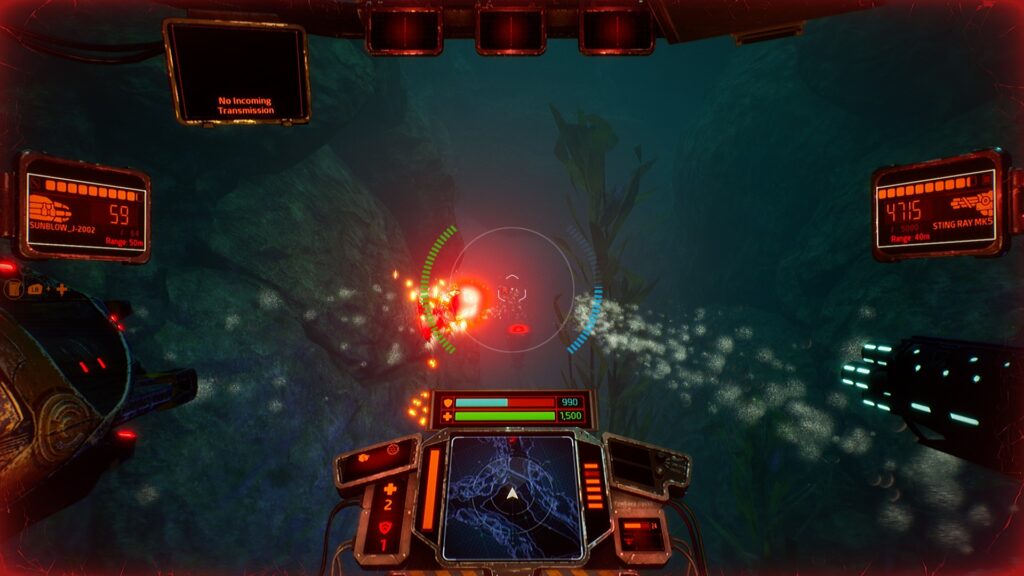
Combat generally involves strafing around your target, while using your dodges to avoid powerful projectiles like torpedoes. Your ship has a recharging shield in addition to its health, so you’ll also want to use the environment to block fire when your shields are getting too low. Alternatively, you can use recharge packs and repair kits to restore your shields and health, but you can only carry three at a time.
You can have two weapons equipped at once, and there is a fairly decent arsenal on display. You have miniguns, railguns, shotguns, torpedo launchers, and so on.
The game does an admirable job making the weapons feel good to shoot, and there are some nice audio and visual effects to reinforce the idea that you are fighting deep under the ocean. Gunfire and explosions are muffled, and torpedoes create bubble trails. The effects aren’t perfect, but work just well enough to make the game pretty immersive at times.
Unfortunately, there is a definite downside to the number of weapons you’ll acquire throughout the campaign. In a completely asinine design decision, the developers didn’t implement a way of getting rid of older weapons. Many times throughout the game, you’ll find weapons that are literally just an improved variant of something you already have. Since there is no way to get rid of them, you’ll have to manually cycle through each gun. Obviously, this can be incredibly frustrating in the heat of battle.
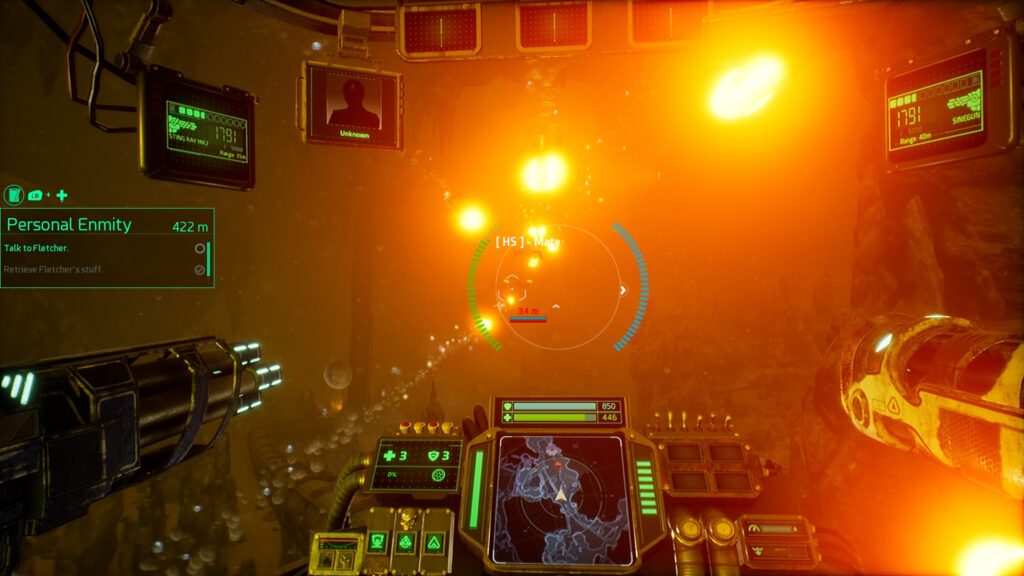
You can also have two special abilities equipped at once as well. These cooldown-based gadgets range from a reinforced shield, to countermeasures that break enemy target locks, to weapons like torpedo barrages or drones that will attack the nearest enemy.
One of the game’s six submarines can also equip two secondary weapon turrets. These AI-controlled turrets will fire on nearby enemies, and include things like an automatic minelayer, machineguns, torpedoes, and railguns.
It’s a shame that only one ship can equip these turrets, but then again they aren’t particularly useful in the first place. They straight up don’t fire upon hostile Nano Plankton-infested wildlife, and you have to remember to manually reactivate them every time you disembark from a ship or station.
While Deep Descent‘s combat certainly has its highlights, there are lots of janky little issues that get in the way. The ascend/descend keys are bound to the same keys as dodge up/dodge down, so you’ll need to be careful not to send your ship flying into a cave ceiling when you were trying to slowing rise over an obstacle. Luckily, a recent patch somewhat improved this by making you have to double tap the keys to dodge.
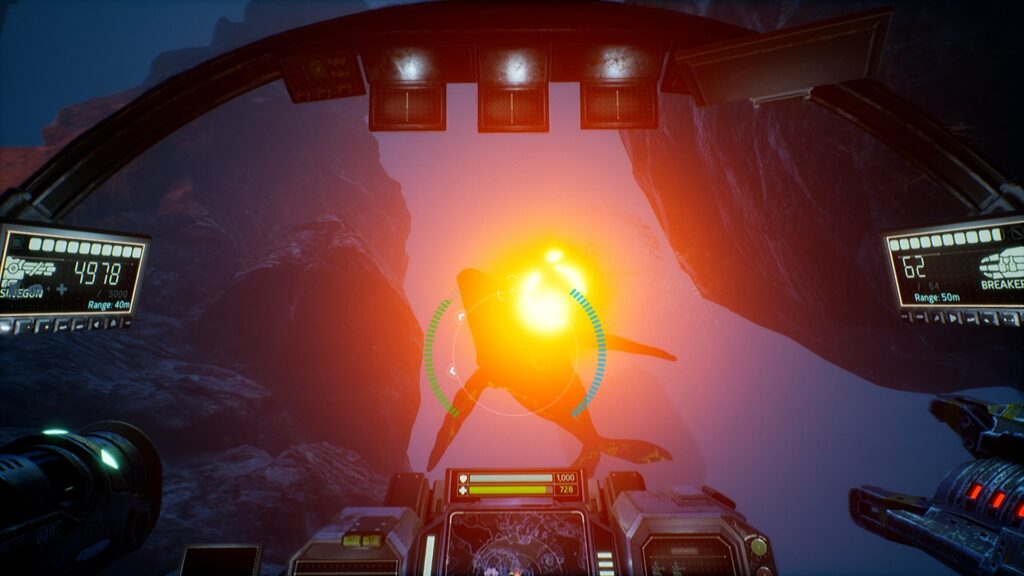
There is another awkward aspect to dodging, and that is the fact that you are actually at a disadvantage for not using a controller in Deep Descent. There doesn’t seem to be a way to dodge side-to-side or backwards/forwards on keyboard. It’s not listed in the keybindings, and I haven’t been able to find a way to do so while experimenting with key combinations.
Meanwhile, on a controller, its as easy as just pushing your analog stick in the desired direction and tapping LB. Speaking of controls, Deep Descent doesn’t feature HOTAS support, and the devs don’t seem particularly interested in implementing them.
There are other funky aspects to the controls as well, like TAB being used to navigate in menus, only being able to buy and craft ammo in tiny set increments, and an awkward radial interface being used to access your inventory, map, journal, and other menu features.
While you can play Deep Descent alone, it was clearly designed with four player co-op in mind. Despite there being four main characters in the story, you are always by yourself when on missions. The opening cutscene implies that all four characters are in the same submarine, but then they have their own ships while in co-op. There are even other cutscenes later in the game that show them each piloting their own individual ship.

After seeing the AI in action, I suspect that this is because the developers knew they couldn’t program three computer-controlled teammates that didn’t get in your way or do stupid things. The enemy AI does little beyond charging towards you guns blazing, and will only occasionally try to use their own dodge moves.
They also like to get stuck a lot. This is especially apparent with the really lame Nano Plankton animals, which just swim straight towards you and frequently jam up each other when attacking in groups.
Deep Descent‘s campaign will probably take you around 15 hours to complete if you take the time to explore Aqua for salvage and do side quests. At this point you might want to try out the game’s competitive multiplayer mode. Unfortunately, that isn’t possible.
This game’s multiplayer was completely dead on arrival. I tried for a week to find active servers at all hours of the day, but no one is playing this game online.
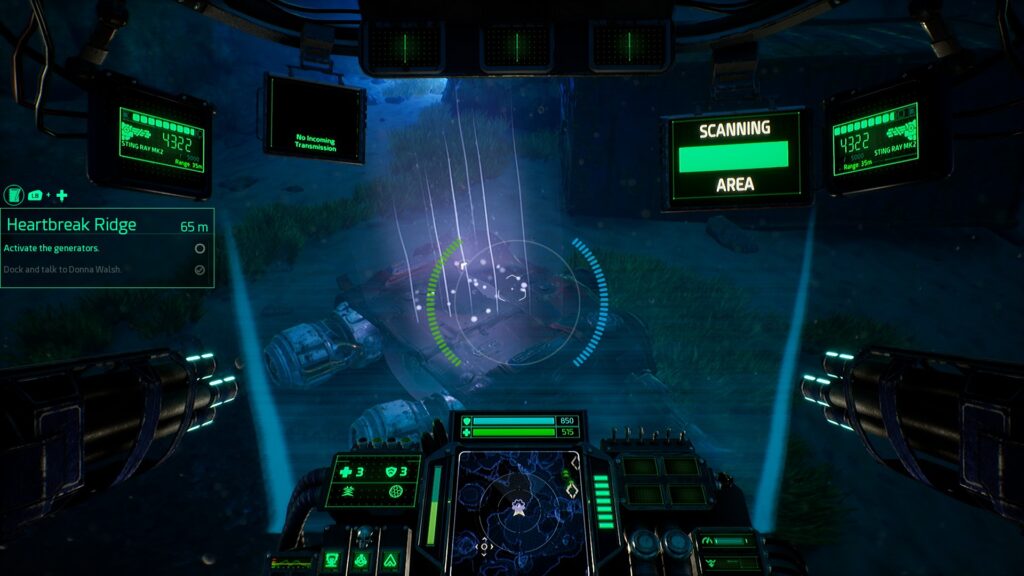
As harsh as I’ve been on Aquanox Deep Descent, I wouldn’t go so far as to call it a terrible game. The combat can be fun and satisfying at times, especially when you land those one shot kills with the railgun against a smaller ship.
While the visuals and sound effects aren’t fantastic, the game still manages to be fairly immersive, especially with so much of the HUD being integrated into the cockpit of each ship. There is something compelling about traveling around the depths of Aqua, looking for salvage and ambushing unsuspecting pirates.
Still, there is no denying that Aquanox Deep Descent is a very flawed game that doesn’t live up to its pedigree. The modest budget and troubled development cycle are glaringly obvious in many places throughout the game, and there are a lot of janky mechanics and bizarre design decisions.
If you find it deeply discounted in a future sale, then you might find some things to like here. In its current form however, there are just too many things wrong with Deep Descent to give it a recommendation.
Aquanox Deep Descent was reviewed on Windows PC using a review copy provided by THQ Nordic. You can find additional information about Niche Gamer’s review/ethics policy here.